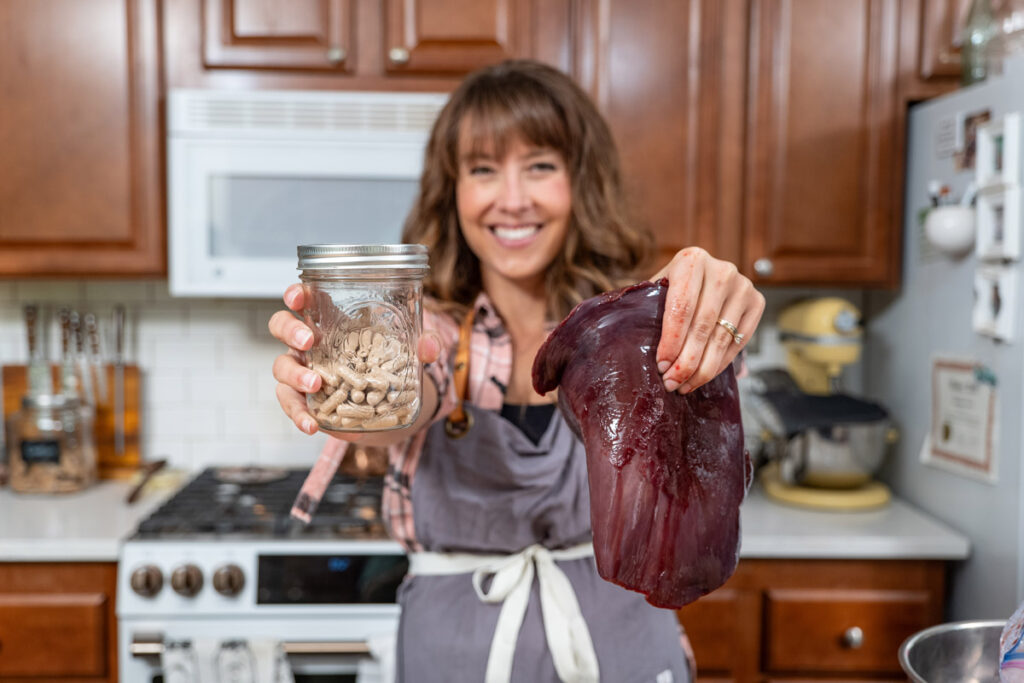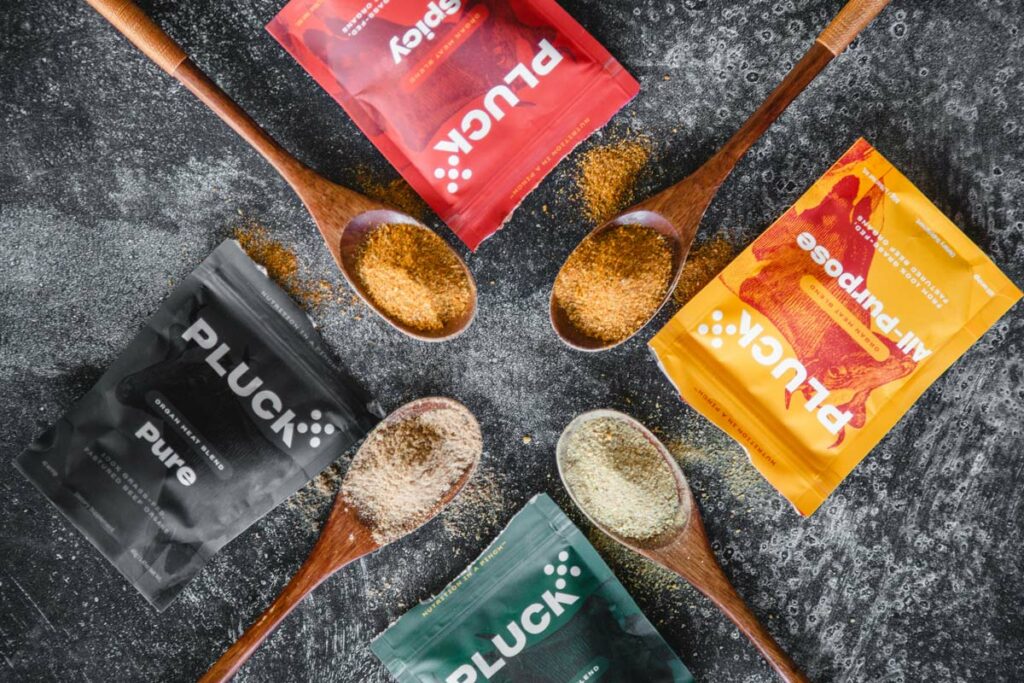When it comes to eating the whole animal, our modern-day culture has fallen away from eating nose to tail. Sadly, some of the most nutrient-dense parts of the animal are in the cuts many people don’t eat. If you’ve been wanting to give offal a try, this post is a must-read.

Table of Contents[Hide][Show]
What Is Offal?
Offal, which is pronounced awful, is the edible internal parts of animals, including the heart, kidney, liver and tongue. Some people also consider parts like the cheek, suet, tripe and trotters as offal.
The word “offal” is said to have derived from the Middle English spelling of off, which is “of” and “fall,” meaning the parts of the animal that would fall off when butchering.
You may be surprised to find out that you’re already consuming offal in the form of hot dogs (often with a casing made from the stomach), bone marrow (a common delicacy at high-end restaurants), bone broth (made from simmering marrow and joint bones in water) and even pork rinds (a popular chip-like snack for those on a keto diet).
Some other dishes made from organ meats are:
- Rocky Mountain Oysters
- Chitlins
- Menudo
- Haggis
- Blood Sausage or Blood Pudding
- Steak & Kidney Pie
- Pâté

Is It Safe to Eat?
You may have heard people talk about the dangers of eating organ meats such as kidneys and livers since they’re used to filter out toxins. But it’s important to remember that these organs work as a filter, ridding the animal of toxins, not storing them.
They’re not sponges that hold onto toxins; they’re more like garbage disposals that help bind toxins and move them through so they can safely exit the body.

Why Eat Organ Meats
You may be wondering why we should eat organ meats in the first place. I’ve discussed the benefits of eating liver in a previous podcast, and I also have a tutorial on how to make beef liver supplements.
Health Benefits
Often, these “lesser” cuts of meat are more affordable than the premium cuts, but they can be higher in nutrients as well. The amounts vary based on the organ (and the animal), but typically speaking, organ meats are high in the following:
- Iron – Iron is necessary for making hemoglobin, which carries oxygen through our body. Organ meats are a great source of iron, specifically the liver. (Source)
- B vitamins – Organ meats contain high levels of B6 and B12 vitamins. B6 is necessary for breaking down macronutrients (proteins, carbohydrates and fats), as well as supporting healthy immune function. “B12 is necessary for making brain and nerve cells, DNA and red blood cells.” (Source)
- Alpha-lipoic acid (ALA) – ALA protects mitochondria (the part of the cell that produces energy). As we age, our body’s ability to produce ALA decreases, so consuming foods high in it is important. Organ meats (specifically beef heart and kidneys) are a great option, as well as spinach, tomatoes and broccoli. (Source)
- Minerals & Vitamins – Organ meats are good sources of magnesium, selenium and zinc, important minerals for nerve and muscle function, thyroid function, reproductive health, wound healing and more. Also a good source of vitamins like A, D, E and K2.
- Protein – The building block of cells (building new and repairing damaged cells). (Source)
Furthermore, organ meats contain these nutrients in “Mother Nature’s” purest form that’s readily available and absorbable by our body. Many times, our supplements today are made from either synthetic vitamins or the vitamin has been stripped out and isolated and isn’t as absorbable because it’s not in combination with the other vitamins or minerals that help our body to fully assimilate it.

How to Start Eating Organ Meats
It may be challenging to jump right in with dishes like steak and kidney pie, and James doesn’t recommend this anyway. As a chef, he knows you can train people’s palates, but it takes some time.
This is the same recommendation he makes with organ meats. His Pluck seasoning (use coupon code “MELISSAKNORRIS” for 15% off your order) is the perfect solution because it’s five organ meats (liver, kidney, spleen, heart and pancreas) blended together with Redmond Real Salt, herbs and seasonings.
There are four different flavors: All-Purpose, Zesty Garlic, Spicy and Pure. The All-Purpose is the most popular. The Zesty Garlic is night-shade-free and contains no seeds. The Spicy is similar to a taco seasoning flavor (but isn’t too spicy!), and the Pure is just the organ meats (no salt or seasonings added).
When using Pluck, you (and your children) probably won’t even realize you’re eating organ meat, but it’s the best way to get micro-doses of this superfood daily.
James says, “If you can season it, you can Pluck it!” Some of his favorite recommendations for using Pluck seasoning are on popcorn, seasoning scrambled eggs in the morning, or making a homemade salad dressing!

About James
James Barry’s 20 years in the culinary field started as a private chef cooking for celebrities. Most recently, James launched his first functional food product, Pluck, an organ-based seasoning.
It’s the first of its kind and an amazingly easy and delicious way for people to regularly incorporate organ meats into their diet.
James is also a published cookbook author. He co-authored the recipes in Margaret Floyd’s Eat Naked and the follow-up cookbook, The Naked Foods Cookbook. He most recently co-authored the recipes in Dr. Alejandro Junger’s Clean 7.
You can find more about Pluck on the Eat Pluck Website (remember to use code “MELISSAKNORRIS” for 15% off your order), as well as on Instagram at Eat Pluck or Chef James Barry.




